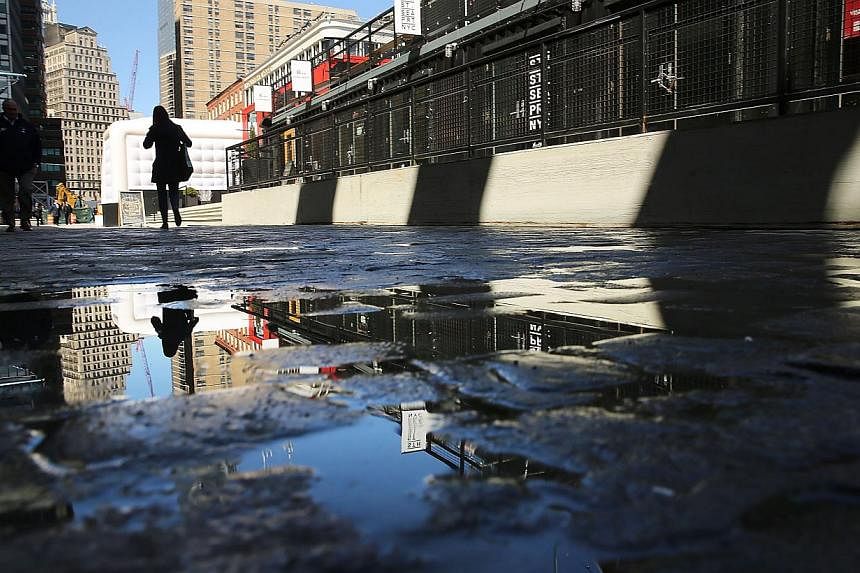WASHINGTON (AFP) - Climate change and sea level rise are threatening historic US landmarks, from the Statue of Liberty to Nasa's coastal rocket launch sites, and the nation needs to prepare, scientists said on Tuesday.
"The range and scale of impacts are alarming," said the report by the Union of Concerned Scientists that listed more than two dozen landmarks endangered by wildfires, coastal erosion and flooding - events scientists say are being made worse by global warming.
They include the Statue of Liberty and Ellis Island in New York Harbor, which was the entry point for 14 million immigrants from 1886 to 1924.
Sea level has risen 12 inches (30 centimetres) around New York City over the past century, the report said.
Then came Hurricane Sandy in 2012, which flooded most of Liberty Island and all of Ellis Island, destroying most of their infrastructure and forcing their closure for months.
New York is now rebuilding electrical systems on the islands "as much as 20 feet above sea level and designing the heating and air conditioning systems to withstand flooding," the report said.
Other sites at risk include the first permanent British colony in North America at Jamestown Island in Virginia, and historic Charleston, South Carolina.
Another is Fort Monroe, where the first African slaves arrived in 1619 and where 250 years later they were given refuge as "contraband" of the American Civil War, a move that paved the way for the abolition of slavery.
"The voices of our ancestors speak to us from these places," said Alan Spears, historian and director of cultural resources at the National Parks Conservation Association.
US space agency retreats
Five of seven of Nasa's multi-billion dollar coastal complexes famous for training astronauts and launching historic missions to space are also at risk.
From Cape Canaveral in Florida to mission control in Houston, the US space agency is busily building seawalls where possible and moving some buildings further inland.
"According to Nasa's planning and development office, rising sea levels are the single largest threat to the Kennedy Space Center's continued operations," said the report.
One key Nasa site that is succumbing to rising seas is Wallops Flight Facility in Virginia, where 16,000 rockets have launched and where sea level has surged nine inches (23 centimetres) since it opened in 1945.
Another is Langley Research Center in Virginia, a US$3.5 billion (S$4.4 billion) facility with specialized wind tunnels for simulating flight.
"Retreat is the way to go here, because you just can't like, get up and move. The infrastructure is too great," Mr Russell De Young of the Nasa science directorate at Langley told AFP.
"They are tearing down buildings that are at the water's edge and building new structures as far back as we can against the fence of the property line," he said.
The new complex is aptly named New Town. President Barack Obama in 2009 called on all government agencies to take steps to prepare for climate change.
De Young said the space agency, like other government agencies with facilities on the coast, are trying to make incremental changes over the coming decades.
"This is not imminent," he said, noting that the forecast at Langley, which is in Hampton, Virginia, is for a five-foot (1.5-metre) sea level rise from the 1980s through the year 2100.
Rising seas are not the only issue. Wildfires are getting more severe and less predictable, posing a major threat to 19th century California Gold Rush towns and ancient pueblos in New Mexico and Colorado, the report said.
The costs of rebuilding and preparing may be high, but the cost of doing nothing would be higher, experts said.
"This really is just the tip of the iceberg," said UCS director of climate impacts Adam Markham.
"We need to make adaptation a national priority and bring resources where they are needed."

